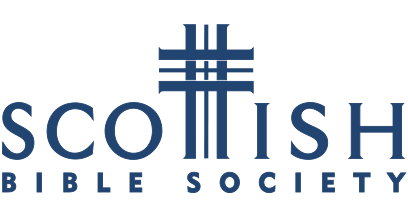
click on the image for some prayer resources to help us be healthy

Love Songs for Healing and Hope
Rev. Fiona Gardner
An encouraging resource book for those who have experienced loss and sorrow.
This book is the sequel to Love Song for a Wounded Warrior.
The longer term effects of bereavement and trauma are discussed, and stories offered by colleagues and friends who
have also faced life changing situations. The book is offered as a selection of resources, blogs and reflections which might be supportive
to those who are finding life tough in these days.
All proceeds of this book go to charity, split equally between ‘Quiet Waters’ in Camelon, Falkirk, and ‘Richmond’s Hope’,
both charities that provide support to people who are finding life difficult.
If you would like to know more, please contact This email address is being protected from spambots. You need JavaScript enabled to view it.
Copies of the book can be obtained for £15 plus postage from the author at the above email,
or from Handsel Press https://handselpress.co.uk/ product/love-songs-for-healing-and-hope/
more money will be raised for the two charities
if you approach the author directly at This email address is being protected from spambots. You need JavaScript enabled to view it.
Here are some of the charities we support. Click on the picture links for more information.
We also support a variety of smaller local charities.

https://comfortinternational.org/

St David’s Knightswood
The church that we all recognize today as St David’s Knightswood was opened in December 1929. It was originally called Knightswood West Church, and for the first ten years all activities including services were held in the church halls in Loanfoot Avenue. The St David’s name was adopted in August 1936 following the closure of St David’s-in-the-West in Cromwell Street near St George’s Cross. The actual church building in Boreland Drive wasn’t opened until October 1939, the month after war had been declared in Europe.
St David’s-in-the-West had an interesting history going back as far as the early 18th century at the old Tron Church in Argyle Street, and later at the Ramshorn Church in Ingram Street. In 1843 most of the St David’s congregation joined their young minister John Gordon Lorimer in deserting the building in Ingram Street to form Free St David’s Church. This was the difficult period known as The Disruption, ending many years of ministers being unfairly appointed by men of status and influence. Starting from a modest building in North Frederick Street, Lorimer’s congregation grew in number before moving west to larger premises, first to West Regent Street in 1864, and finally to Cromwell Street in 1892.
In 1929 the Church of Scotland and the United Free Church became united. The Moderator at the time was the Rev Dr John White who set about forming the National Church Extension Scheme. Knightswood West was the third church in Scotland to be built under this scheme. The Rev WL Fordyce was appointed as the first minister of Knightswood West. From a membership of 479 in 1930, numbers increased rapidly after the war years reaching a peak of 1,976 in 1958, no doubt helped by the Billy Graham Tell Scotland campaign. The Hilsdon pipe organ, communion table, baptismal font and communionware had been in storage since the closure of St Davids-in-the-West, and these were all installed in time for the opening service in the new church building.
St David’s has been served by eight ministers and several assistant ministers since it opened nearly 96 years ago. During the 1960s and 1970s a remarkable number of young men from the congregation gave their lives to Christ by becoming ministers. Strong leadership and commitment saw the flourishing of Sunday Schools, the 237 Boys Brigade company, Girl Guides, two Guilds, a Ladies Club, a Men’s Club, and a Young Women’s Group, not forgetting a Church Choir of around 30 members. In 2002 St David’s opened its doors to help Asylum Seekers who had been moved to high flats in the parish. A creche for children was set up, and English classes were established to assist with learning.

Knightswood St Margaret's
The congregation of Knightswood St Margaret's was formed in 1925 from those living in the new housing area of Knightswood and worship took place in what is now called the 'small hall' which, from the beginning was a scene of unceasing activity of Sunday School, Girl Guides and Boys' Brigade as well as organisations for adults such as the Woman's Guild.
In 1928, the first steps were taken towards the building of the church as we know it today and the members were much involved in fund raising, e.g. garden fetes, and the 'St Margaret's Market' took place.
On 5th May, 1931, the children of the congregation (for a small sum) were allowed to lay a brick and thus have their place, literally, in the building of the church. The architect of the building was Sir Robert Lorimer, who, unfortunately died in 1929 and so this church remains as one of the last examples of his very distinguished work. The sanctuary of Knightswood St Margaret's Church was dedicated on 2nd April, 1932.
In May, 1982 a union took place between the congregations of St Margaret's and Netherton: St Matthew's, this building becoming the place of worship for the new charge of Knightswood St Margaret's Parish Church
Please click HERE to access YouTube video of the stained glass windows of St Margaret's along with Father Willis organ recital.
Temple Anniesland
At the end of the 19th century Anniesland was an area where coal-pits and quarries, blaes bings and brickworks existed side by side with agricultural land. In 1899, at the Cross itself, there was only a smithy standing in an open field, with farmlands to the east. Bearsden Road did not exist. Great Western Road terminated at the Cross – beyond were green fields where cows grazed and bings of red blaes. The open ground now occupied by the church and hall was actually the site of an old quarry.
During the 1890s a number of people migrated from Maryhill to the district. Among them were members of Maryhill United Presbyterian Church [now Gairbraid Church]. Their minister, the Rev William Duncan, encouraged them and others in the area to petition the UP Presbytery for the opening of a preaching station or ‘church extension’ at Anniesland Cross.
In August 1899 a hall had been built [now the Old Hall] at a cost of £1,450 and church services had begun. The newly formed congregation had 47 members. The building was only a few months old when the union took place between the United Presbyterian Church [to which Anniesland Cross belonged] and the Free Church, to form the United Free Church of Scotland.
The first minister of Anniesland Cross Church was the Rev Robert L Browning MA, who was inducted in June 1900 and served for 25 years. In October 58 people joined the church. As the work of the new charge continued to prosper, it became obvious the hall would soon be too small to accommodate the growing membership.
On 4 November 1905 the memorial stone of a new church building, on the stair leading to the north gallery, was laid by John Stephen of Linthouse, a member of the famous Glasgow ship-building family, who was said to be a strong upholder of the United Free Church. Mrs Eliza Stephen deposited a memorial casket in the wall. No records reveal what is in the casket, so there it remains for a future generation to discover!
Thus, in the space of seven short years, the congregation, through their faith, vision and giving, were able to plant a church at Anniesland Cross. Little did they realise how strategic that location would become as the area developed during the next 100 years.
In the care of a succession of Ministers, the congregation of Anniesland Cross Church grew through the difficult periods of the two World Wars and the development of housing and the building of two churches in the adjacent area of Knightswood. By the time of the Jubilee in 1949, during the ministry of Rev Harry Thomson, the congregation had over 800 members.
In 1984 the congregation of Anniesland Cross Parish Church joined with that of the adjacent Temple Parish Church in a union which was designated ‘Temple-Anniesland Parish Church’.





















